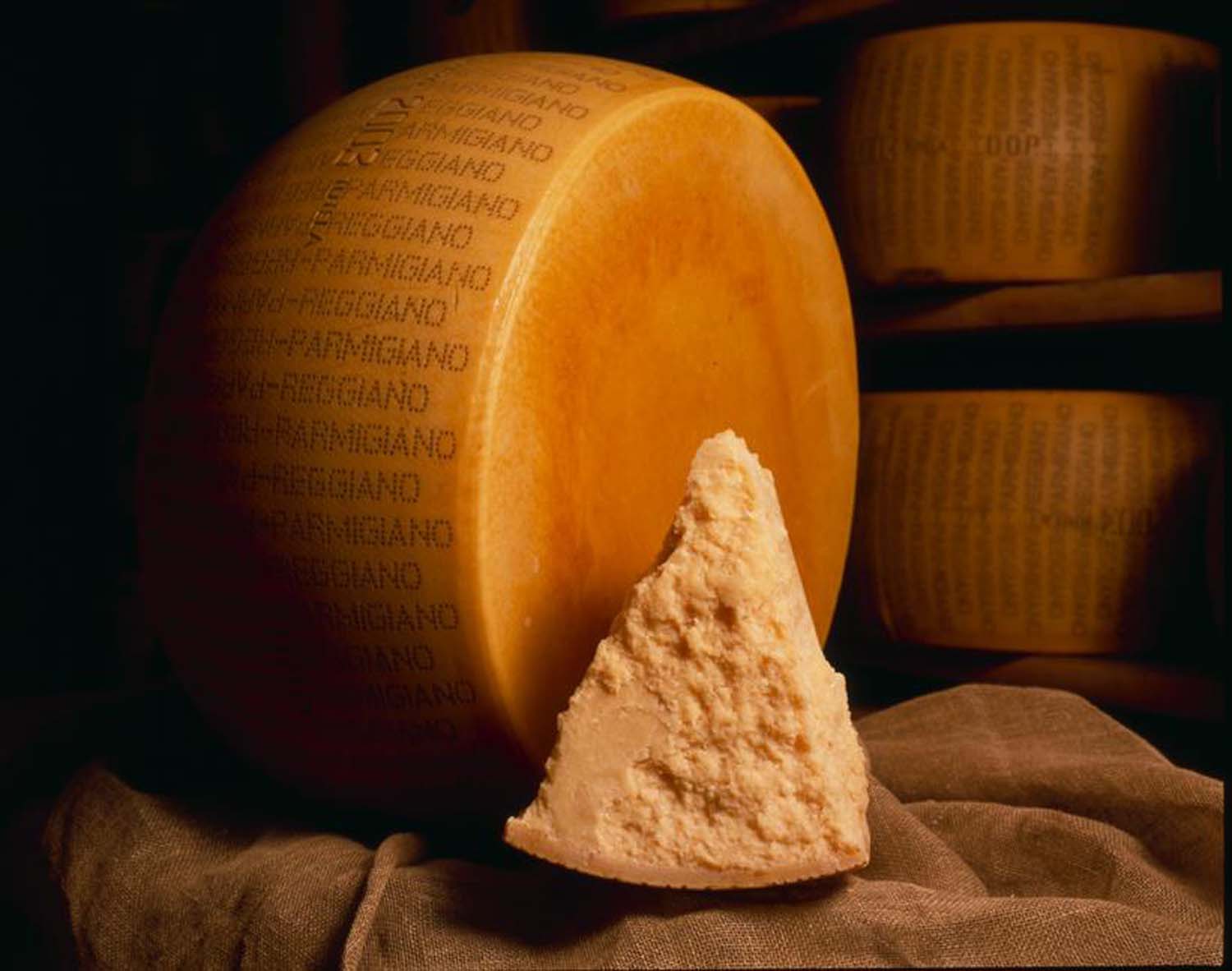Where were the first dairies that made the cheese? They were in Cistercian and Benedictine monasteries.
The history of Parmigiano Reggiano dates back approximately 900 years. Today, as then, the ingredients were always the same: water, salt, milk and much patience during the aging process.
But, the most important ingredients were the pastures of Emilia Romagna. The Cistercian and Benedictine monasteries, which spread over the plains between Parma and Reggio Emilia, favoured the development of granges or farms for raising cows suitable for milk production. The coming together of these granges with salt from Salsomaggiore, and the need to make a product that would keep for as long as possible, led to the creation of a very particular cheese, Parmigiano Reggiano.

Literary quotations
Not only Boccaccio, noted the cheese. The goodness and fame of Parmigiano Reggiano spread early on throughout Europe and the rest of the known world. Robert Louis Stevenson also mentioned it in his book Treasure Island. Doctor Livesey talking to Jim, the protagonist says: “You’ve seen my snuff-box, haven’t you? And you never saw me take snuff, the reason being that in my snuff-box I carry a piece of Parmesan cheese–a cheese made in Italy, very nutritious.” To be nutritious. This was precisely, the main objective the monks from Reggio Emilia had in creating parmesan nine centuries ago.

Several centuries ago, it was already thought necessary to protect against counterfeit parmesan. Over the last century, this protection has become a necessity defended by law.
The first consortium for verifying product origin was registered at the Chamber of Commerce of Reggio Emilia in 1901. Eight years later, representatives of the Chambers of Commerce of Parma, Reggio, Modena and Mantua met to establish the wording for the labelling of the cheese. Meanwhile, problems linked to counterfeiting grew worse. Even a “Reggianito argentino” (Argentinian parmesan) came on the market.
In 1928, the voluntary Consortium for the defence of Grana Reggiano and later for Parmigiano Reggiano was established. This Consortium brought together all the producers and established a mission that it still carries out today: brand protection.
In fact, among its main tasks is strictly applying the official Production Rules, which were updated on 29 August 2011.
The Protected Designation of Origin for the cheese follows EEC Regulation 2081/92 and Regulation (EC) No. 1107/96.
Regulations for Parmigiano Reggiano

A regulation published in the official journal of the European Union on 14 December 2012 also allowed for use of the “Mountain Product” quality indication.
As a result of this regulation, the Consortium has defined guidelines for indicating Parmigiano-Reggiano which is produced in the mountains. These guidelines indicate the following features:
● herds must be within mountain areas
● fodder used for feeding the cows must be from mountain areas
● dairies should be in mountain areas
● each step of dairy activity, from collection to tank storage and heat processing, must be done in mountain areas
● seasoning must occur within places in mountain areas.
Font Consorzio Vacche Rosse

